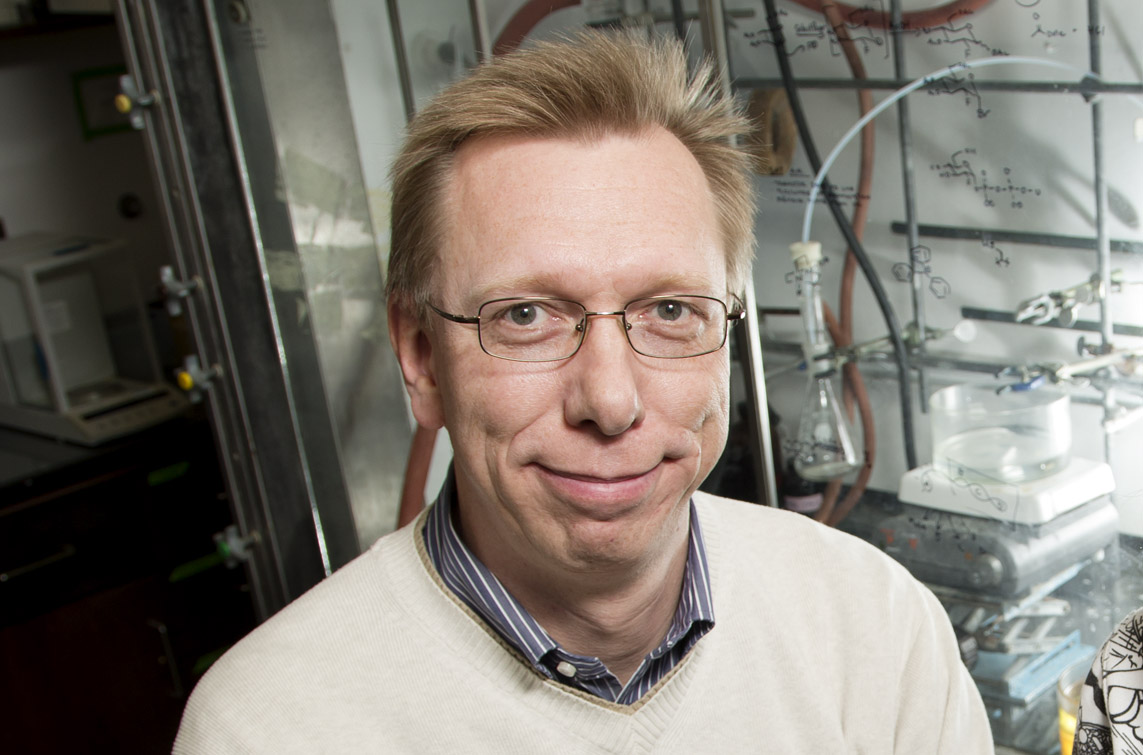Researchers establish long-sought source of ocean methane
An abundant enzyme in marine microbes may be responsible for production of the greenhouse gas.
The following is a modified version of an article that originally appeared on MIT News, written by Anne Trafton, the original of which can be found here.
Industrial and agricultural activities produce large amounts of methane, a greenhouse gas that contributes to global warming. Many microbes also produce methane as a byproduct of their metabolism. Some of this naturally released methane comes from the ocean, a phenomenon that has long puzzled scientists because there are no known methane-producing organisms living near the ocean’s surface.
A team of researchers from MIT and the University of Illinois at Urbana-Champaign has made a discovery that could help to answer this “ocean methane paradox.” First, they identified the structure of an enzyme that can produce a compound that is known to be converted to methane. Then, they used that information to show that this enzyme exists in some of the most abundant marine microbes. They believe that this compound is likely the source of methane gas being released into the atmosphere above the ocean.

Ocean-produced methane represents around 4 percent of the total that’s discharged into the atmosphere, and a better understanding of where this methane is coming from could help scientists better account for its role in climate change, the researchers say.
“The most impactful part of the study is that we can now pinpoint which organisms make methylphosphonate, and hence contribute to methane generation in the oceans,” Illinois Professor of Chemistry Wilfred van der Donk said.
“Understanding the global carbon cycle is really important, especially when talking about climate change,” says Catherine Drennan, an MIT professor of chemistry and biology and Howard Hughes Medical Institute Investigator.
Drennan and Wilfred van der Donk, a professor of chemistry at the University of Illinois at Urbana-Champaign, are the senior authors of the paper, which appears in the Dec. 7 online edition of Science. van der Donk is Richard E. Heckert Endowed Chair and Director of Graduate Studies in the chemistry department, as well as a member of the Carl R. Woese Institute for Genomic Biology. Lead authors are David Born, a graduate student at MIT and Harvard University, and Emily Ulrich, a graduate student at the University of Illinois at Urbana-Champaign.
Solving the mystery
Many microbes produce methane as a byproduct of their metabolism, but most of these live in oxygen-poor environments such as the deep ocean or the digestive tract of animals—not near the ocean’s surface.
Several years ago, van der Donk and Illinois colleague William Metcalf found a possible clue to the mystery of ocean methane: they discovered a microbial enzyme that produces a compound that can then be converted to methane. They used the genetic sequence of the enzyme, known as methylphosphonate synthase (MPnS), to search for other versions of it in the genomes of other microbes. However, every time they found a potential match, the enzyme turned out to be a related enzyme called hydroxyethylphosphonate dioxygenase (HEPD) that does not produce methane.
Van der Donk asked Drennan, an expert in determining chemical structures of proteins, if she could try to reveal the structure of MPnS, in hopes that it would help them find more variants of the enzyme in other microbes.
The researchers compared X-ray crystallography data from MPnS with the related HEPD enzyme and found one small but critical difference. In the active site of both enzymes (the part of the protein that catalyzes chemical reactions), there is an amino acid called glutamine. In MPnS, this glutamine molecule binds to iron, a necessary cofactor for the production of methylphosphonate. The glutamine is fixed in an iron-binding orientation by the bulky amino acid isoleucine, which is directly below the glutamine in MPnS. However, in HEPD, the isoleucine is replaced by glycine, and the glutamine is free to rearrange so that it is no longer bound to iron.
“The most satisfactory part of the study is having a molecular picture that can explain how two enzymes achieve a completely different reaction,” van der Donk said. “We knew from previous studies that they use the same basic mechanism, but at the end somehow manage to direct the reactions two different ways. Now we found that Nature made just a tiny and unexpected change, a mutation of a single amino acid, to do this, and we understand how this mutation makes the difference!”
An abundant enzyme
By searching databases of genetic sequences from thousands of microbes, the researchers found hundreds of enzymes with the same structural configuration seen in their original MPnS enzyme. Furthermore, all of these were found in microbes that live in the ocean, and one was found in a strain of an extremely abundant ocean microbe known as Pelagibacter ubique.
“It will probably not be wise to try to reduce the amount of methane produced in the oceans since we are likely to affect and disrupt the ocean’s ecosystems and thereby other processes that are important for life on earth,” van der Donk noted. “Probably more important applications are in providing clues how one can direct radical reactions to a desired outcome. Iron-based catalysts are under much investigation to achieve selective chemical reactions, and our study provides insights into how nature achieves this.”
The research was funded by the National Institutes of Health and the Howard Hughes Medical Institute.
Reprinted with permission of MIT News.
